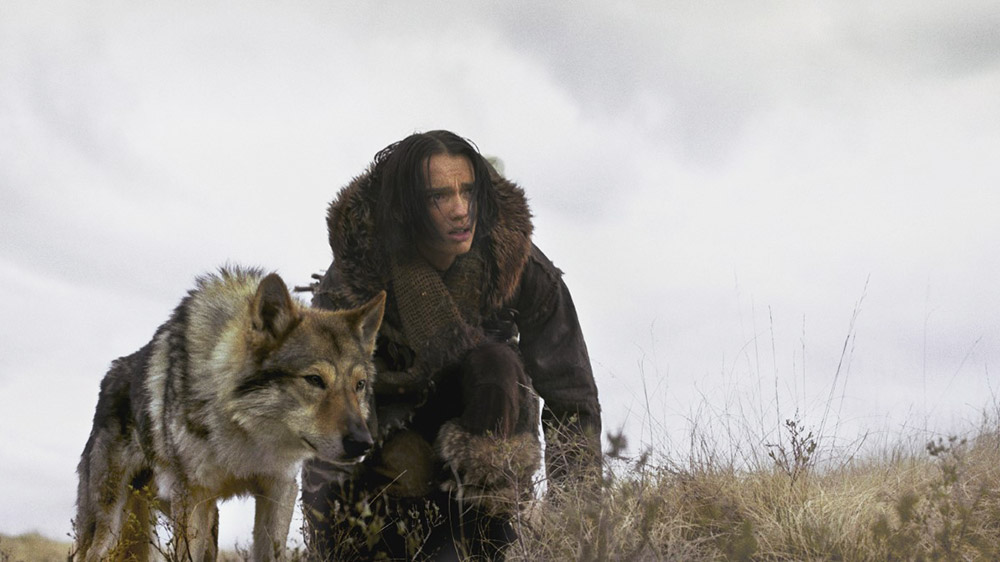For a movie depicting humanity’s early ancestors, and the very struggle to survive, you might be surprised to learn that the title of this film, Alpha, refers to the nickname given to a domesticated wolf.
I certainly was.
For all the positive hype surrounding Alpha online, I couldn’t help being almost as disappointed by seeing it… As I was watching Richmond play Collingwood in the 2018 AFL preliminary final – as a Tiger supporter. Within the first three minutes of this film, you got a pretty clear idea of what you’re in for. Albert Hughes, director of From Hell (2001) and American Pimp (1999) has clearly opted for a more family-oriented story this time around, with a focus on serene cinematography. This at least, the film had, with slow sweeping shots of wild terrain. My immediate speculation was that the film probably would’ve had more impact if it had been viewed on a giant IMAX screen.
In spite of choosing a distinct historical period as a setting, Hughes clearly makes no bones about historical accuracy or fastidious research. The cave people’s costumes, fur-collared woollen coats, look like they were bought at Country Road (very chic for 20,000 years ago). Not to mention the fact at one point in the movie, Kedi, the main character, is kneeling over his befriended wolf companion and shows his boot (which clearly has a rubber sole).

This is, unfortunately, only one of the films many failings.
The story follows Kedi, the Emo son of a more surly caveman, played by Kodi Smit-McPhee and Jóhannes Haukur Jóhannesson respectively. After an initiation buffalo hunt into manhood, Kedi is lost from his pack and must survive the harsh wilderness with a broken foot and attempt to return home to his tribe.
Alpha starts out with a simple enough premise to follow. With resonances of films like Quest for Fire (1981), 10,000 BC (2008), and The Jungle Book (1942-2016) – he eventually makes a companion in the form of a wolf, who Kedi nurses to health after attacking with a knife, naming him Alpha, and forges a deep bond with him.
There are genuine moments in Alpha that are touching. But in the huge stretches of Kedi trying to get home through arctic conditions, it was difficult not to get bored. The plot begins to take on a Disney-like formula, without the fun of something as joyous as Jungle Book. The climax becomes sickeningly soppy, with an overdose of sentimentality that genuinely upturned my stomach a little bit.

There’s a lot of nice effects and CGI used fairly interchangeably to create the dynamic relationship between humans and animals. Unfortunately, this isn’t enough to save the bad writing, poor acting and lack of substance of this airy flop.
When you are creating a movie on this historical scale, I think there needs to be some greater motivation to attempt to display realism, or at least the violence and action typical of the earliest human life. The overdose of cheese and stroppy-eyed-whinging in this movie only lends it the credibility of a midday movie.
Some may be taken in by the story of a boy and the powerful friendship with his wolf. No doubt, some aim of the film, was perhaps to flesh out the early ancestry of the close relationship between men and domesticated dogs. Nonetheless, there isn’t enough punch to save this ultimately weak tale of overstated human emotion.
Families might enjoy this unchallenging, extremely cliche story of the bond that exists between families and animal companions, but it will probably be lost on the majority of cinema-goers.
Fun Fact:
The rudimentary dialogue spoken throughout the movie is a language invented for the movie.




COMMENTS
This film, although flawed, is not inaccurate in its setting. It’s self-consciously slavish in its attempt to correctly represent Upper Paleolithic life, even complete with a conlang meant to evoke Proto-Nostratic. While Nostratic is fringe for sure, it’s still better to have something founded in (pseudo)historical linguistics than a complete fabrication.
The Solutrean period was one of significant technological refinement. While we don’t have any clothing from the era, there’s nothing worn by the characters (rubber soles notwithstanding) that couldn’t have been made using the stone and bone scrapers, needles, borers, burins, etc. that we do have. Yes, even the “fur lining” and fine stitchwork all seem period-appropriate, as do the mammoth-bone huts (which we do have direct evidence for) and representations of complex social dynamics. In terms of its overall look and feel, Alpha screams 20,000 BP.
And this is hardly “the earliest human life”. This is 20,000 years ago. Anatomically modern homo sapiens evolved around 300,000 BP and were well-established in Europe by at least ~45,000 BP. In the Aurignacian, ~20,000 years before this film is set, we already find realistic sculptures, astonishingly lifelike cave paintings, imaginative creations like the “lion man”, proto-villages, burials, evidence of ceremony/religion, and musical instruments. By the time we get to the Solutrean, homo sapiens have developed very intricate lifeways, art, and technology; the only thing that separates them from us is time.
You can shin-kick the movie’s saccharine tone all you want, but don’t knock its “accuracy”. It’s probably the most realistic film ever set in the paleolithic in terms of presentation.